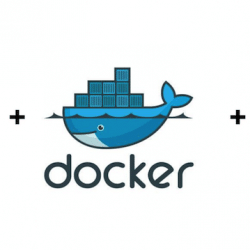- Taboola Blog
- System
Discover the journey of creating synchronized analog clocks using microcontrollers. Learn about power-efficient design, NTP synchronization, and more.
As a content discovery product, we need to be able to pace the campaign through its life on real time – spending the budget entirely without overspending. The team I am leading is responsible for serving Taboola’s video content. Our main goal is to enable growth of our business. Owning the entire serving process of the video content can be crucial to this end. Depending on 3rd parties serving systems with the core process would leave us vulnerable to rising prices, compromised features, serving latency, reduced performance and so on. In order to serve the video on our own we had to come up with a way to pace the amount of times we want to display the video and prevent instances in which the entire budget of the video would drain in a few seconds – common scenario in Taboola’s scale when the video is not targeted aggressively. We […]
What is the connection between kernel system calls and database performance, and how can we improve performance by reducing the number of system calls? Performance of any database system depends on four main system resources: CPU Memory Disk I/O Network Performance will increase while tuning or scaling each resource – this blog will cover the CPU resource.It’s important to note that whenever we release a bottleneck in the system, we might just encounter another one. For example, when improving CPU performance the database load shifts to IO, so unless our storage is capable of delivering more IOPS, we might not actually see the improvement we hoped for. But don’t be discouraged, performance tuning is sometimes a game of whack-a-mole… We all know that the more processing power available for your server, the better the overall system is likely to perform. Especially when the CPU spends the majority of its time […]
Knowledge sharing is critical for every company that wants to grow and improve. The bigger the company – the harder it gets. Inefficiency, a lack of alignment within your peers, difficulty training new workers – you name it. In this post we will take a look at the existing methods for knowledge sharing. How they can’t keep up with growth and fast paced changes, and why people are your best resource for knowledge. What is Knowledge? In general, there are three main types of knowledge that need to be shared in a software company – Technical Knowledge, Product Knowledge and Business Knowledge. When a new employee begins their job, most companies will help them to learn, using some of the more traditional methods to share knowledge: Learn from others – via frontal training or assigning a mentor Allow Self learning – online course, or from the company’s knowledge center (Atlassian, […]
As VP of IT at Taboola, my teams and I are overwhelmed with logs, pinned down by the rate and volume of them. The job of the Production Site Reliability Engineering (SRE) team in Taboola is to keep the technology running smoothly and bring in as many insights as we can from the system, making sure that any and every technical issue (that isn’t self healing or contained) is dealt with quickly. We also support this torrent of incoming data to make sure that any insights that can be gleaned from this data are found. With over 1B users discovering what’s interesting and new through the Taboola Feed, we can’t drop the ball or stop thinking about our logs, log management, where to store them and how to process them. This is the challenge of processing over one million lines of logs every second. To address this challenge, we engaged […]
Hello Git user. In this blog post I will discuss a technique for a unique version calculation for every Git commit. You may ask why we need this, after all every commit in Git is identified by a unique sha1 hash. That’s right, let’s take 2 commits, 4bd92c9 and f5fc029, use their sha1 hash as a version and perform a simple A/B test. The test showed that 4bd92c9 is preferred to f5fc029. If this is the case, how can we tell: Which version is newer? If 4bd92c9 is included in f5fc029, or vice versa? What branch they were built from? It seems we need an alternative. The common standard for the versioning is a SemVer scheme. We will use its parts as follows: Major – manual increment Minor – every released feature will increment the minor Patch – will always be 0 Now let’s take a look at our […]
The existing CI processes in Taboola are quite demanding – a full product build includes 150 maven modules accounting for about 20000 unit tests. Beside running builds from master branch there are also builds for all feature branches and patch releases. All in all accumulating to more than a hundred builds per day. Some of the executed tests are pretty heavy on CPU and memory, performing resource-intensive data crunching. As you can imagine – all this requires substantial CI infra horse power. Which it definitely possesses: Taboola’s Jenkins cluster currently has 35+ Jenkins slaves, each with 20 to 40 CPU cores and at least 100 Gb memory. Each slave runs 5 to 10 executors. All in all – a powerful CI/CD factory. But even with all this power – there are limitations. On the day of the weekly release the volume of builds peaks and we sometimes find ourselves starving […]
Synthetic monitoring is something that we all do. It’s almost something that you don’t think about. You set up a monitor and it just tells you if the service is up or down, most times with just a simple GET. There are the giants in this field (lately consolidated under the Keynote brand as part of AppDynamics) and the new comers like Catchpoint, ThousandEyes, Pingdom (now part of SolarWinds) and WorldPing. All solutions have the same basic concept, pull website information from different agents around the world and provide visibility for the web site operator on uptime, response times and other metrics. But what happens with you have a failure, and no alert? These tools have become so widespread and have such long usage history, that it almost seems pointless to compare. This is a solved problem, no? Just take the cheapest one out there and you’re done. Here at […]







